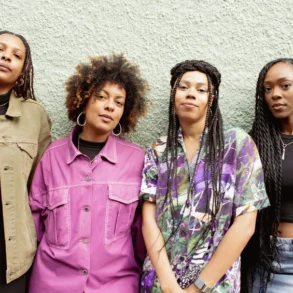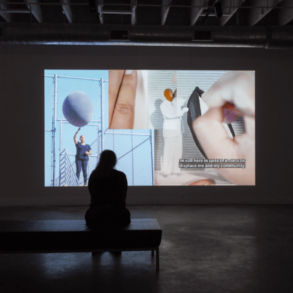
Park Wan-suh is famous for writing novels when he was 40. There is also an artist who held a brush at the age of 40. This is Yoon Seok-nam, who is called the godmother of feminist art.
Yoon, who was a stay-at-home mom, started painting after he had his own room. His subjects extended from his mother to himself and to the women around him.
Afterwards, Yoon turned his eyes to abandoned dogs and talked about his love for life. Recently, I was immersed in drawing portraits of forgotten female independence activists in history.
More than 40 years after painting, Yoon continues to expand his world and devotes himself to feminist art.
Yoon was a stay-at-home mom of a middle-class family until she was in her 30s. I was a wife and mother at home, and I was a daughter-in-law who served my mother-in-law. It was economically prosperous, but there was a feeling of frustration on one side of my mind.
To solve this problem, I decide to draw a picture that I have liked since I was young. I didn’t major in art, but I just started studying painting.
In the 1980s, when Yoon began painting in earnest, abstract art led the domestic flowerbed. However, Yoon was not interested in abstract art. Because I hated the empty atmosphere felt in abstract paintings and thought abstract art was not directly related to my life.
He didn’t even paint to gain fame, so he did it with the mindset of ‘I’ll do what I want to do’.
The theme chosen by Yoon was “Mother.” He tried to tell his story through his mother. In fact, Yoon’s mother often served as a model. Yoon’s mother lost her husband at the age of 39 and raised six children.
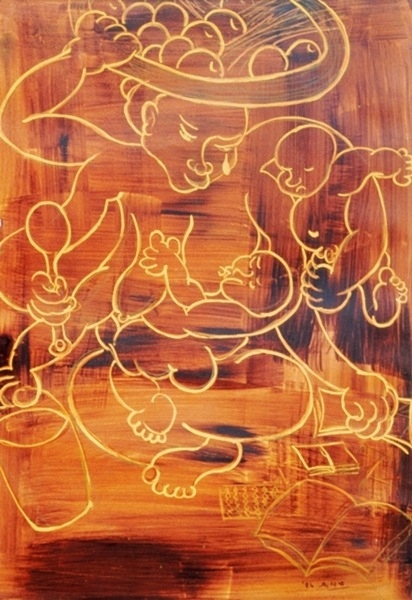
There is a woman who is short of ten hands, just like the title, “Even if you have ten hands.” It’s a scene of peddling while taking care of a child. Hold the child with one hand, and feed another child with the other. He’s holding a spatula with a basket on his head. I also count the money next to the sprawling household book.
A tear falls from such a woman. But I can’t afford to wipe my tears. Yoon tactfully showed a woman’s busy and arduous appearance with vivid strokes.
Yoon held his first solo exhibition in 1982, and the following year formed the October Meeting, a group of female artists. At that time, the art world focused only on the fact that the October collective artists were married women, calling them “Housewife Painters” and “Kyu Soo Artists.”
Even if Your Hands Are Ten, it was displayed in 1986 at Korea’s first feminist art exhibition “Ban to One.” In addition, after this exhibition, feminist art has become a full-fledged presence in domestic flower beds.
Yoon focused on mother-themed installation art using abandoned trees in the 1990s. Yoon felt that the soft, crumpled texture of the wood was like the skin of an old woman.
He wanted to break the idea that art is noble through his work. “Actually, life is not vulgar and noble,” Yoon said, “I wanted to show our current human lives by using the vulgar things as they are.”
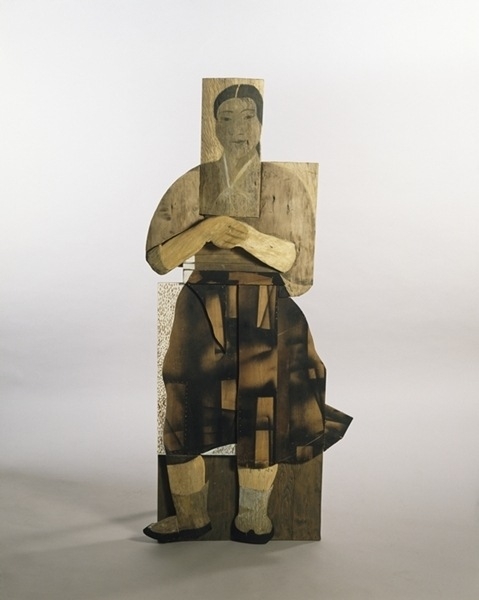
It is an expression of Yoon’s mother’s 19-year-old days. I wanted to express my young, innocent, and elegant mother. The flying hanbok skirt is made of wood, but it’s lively.
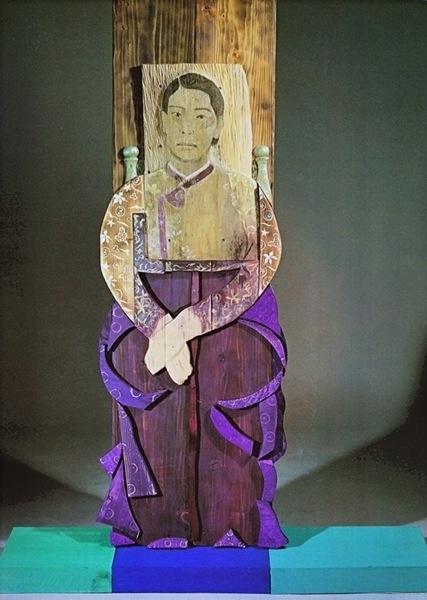
The woman in this painting has a very different atmosphere than the woman in the previous “Mother I – 19.” She has a traditional female figure that is calm and quiet. His expression is stiff.
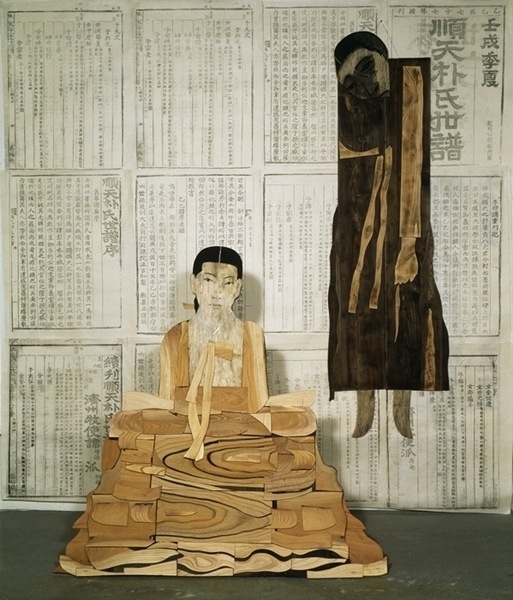
Jokbo is a work of two women made of wood and installed on the background of a genealogy image in Chinese characters.
The woman who gave birth to a son sits proudly in the middle, and the woman on the right who failed to give birth to a son hung herself.
In other words, the fate of the two women is mixed according to the custom of the son’s succession of the family. But they are not all listed in the genealogy.

This is the Mother’s Story, which was exhibited at the Venice Biennale Special Exhibition. Yoon lit dozens of candles in front of his mother’s painting. It feels like holding a memorial service in honor of my mother.
Yoon, who told his mother’s story, started his story through the series ‘Pink Room.’ The Pink Room is also the story of all the women in the home.
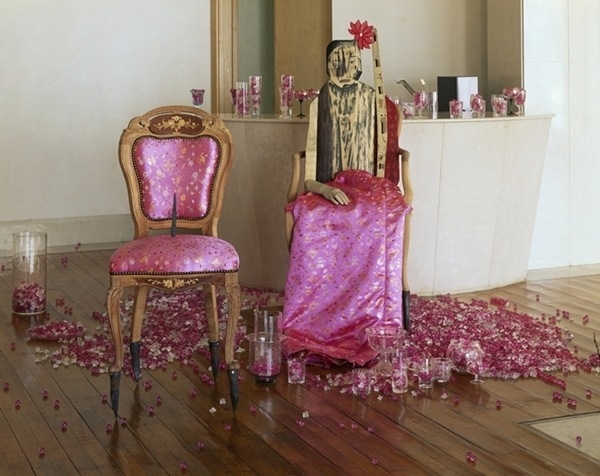
There is a Western-style chair that was popular in the late 1990s. The chair covered with a hot pink industrial complex has pointed hooks, making it difficult to sit down. The chair’s legs also have iron hooks, which look very unstable.
The kitchen is usually considered a space for housewives. Writer Yoon is asking if the chairs at the table belong to women. The intense pink that controls the screen looks more anxious than comfortable.

‘Pink Room IV’ also consists of strong pink colors overall. There are pink beads on the floor. It feels grotesque with hooks on top of the sofa.
Yoon once said of the work, “It looks fancy and nice, but there is nowhere for her,” adding, “I put a bead on it and fall over it.” “The reality that looks fancy but is actually unstable, the contradiction of reality is embodied in the pink room,” he said.
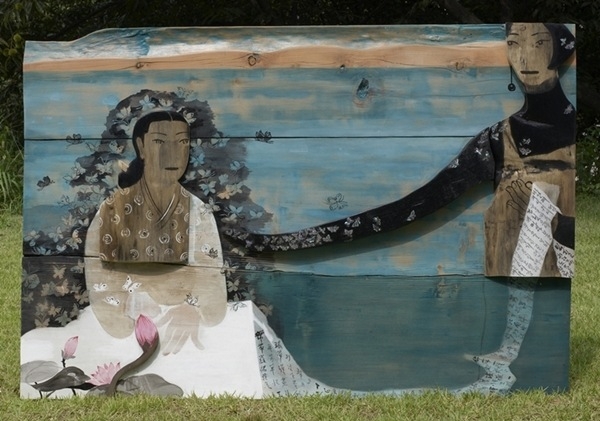
Yoon Seok-nam drew pictures commemorating women in history, including Heo Nan-seol-heon and Lee Mae-chang. It is similar to the work of first-generation Western feminist artists who have discovered forgotten female figures in history.
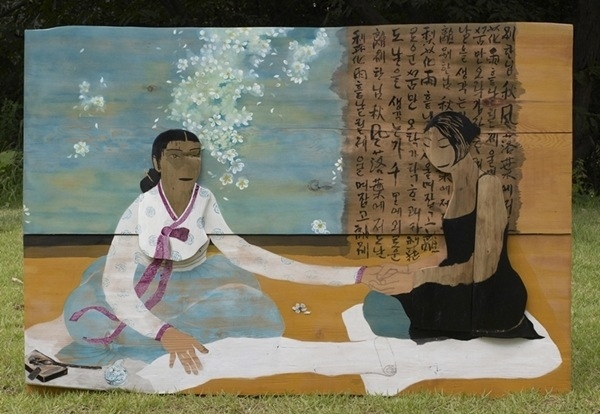
However, Yoon’s work has a Korean aspect in that he discovers women in Joseon and sometimes uses oriental painting brushes.
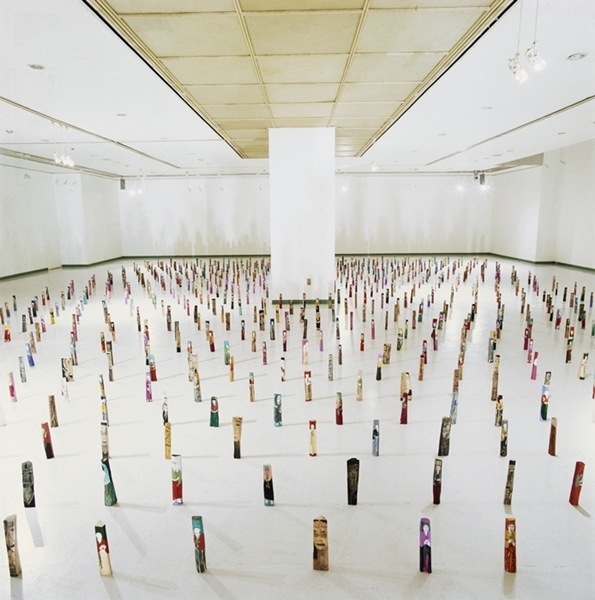
Yoon created 999 wooden sculptures with female figures. Usually the sculpture is built in the form of a huge monument, and it’s installed as low as a seed. It is a work to honor the life of a woman in history who lived without a name.
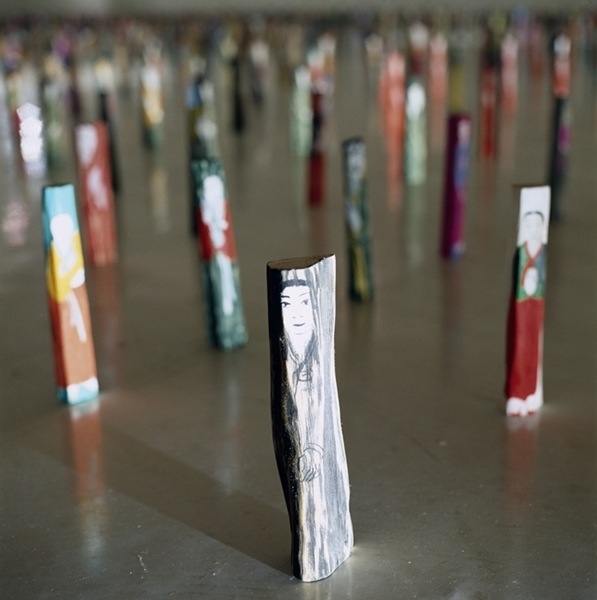
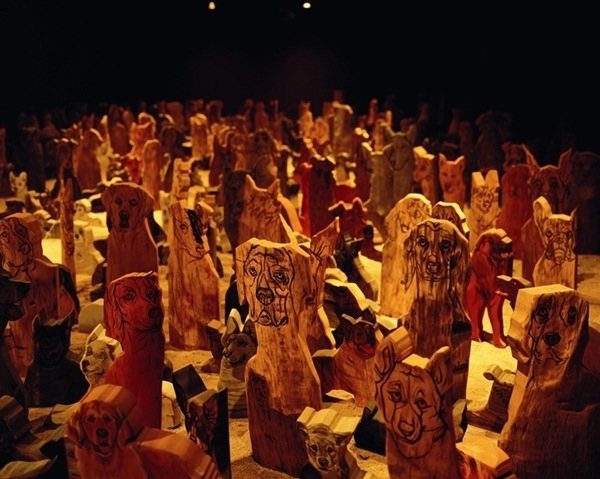
Yoon later expands his interest to abandoned dogs. Since I came across the story of Lee Ae-shin, a grandmother who cares for 1025 abandoned dogs, in the newspaper.
Inspired by this, Yoon creates 1025 pieces of stray dog wood. This piece is a collection of 1025 animals and it’s done as one.
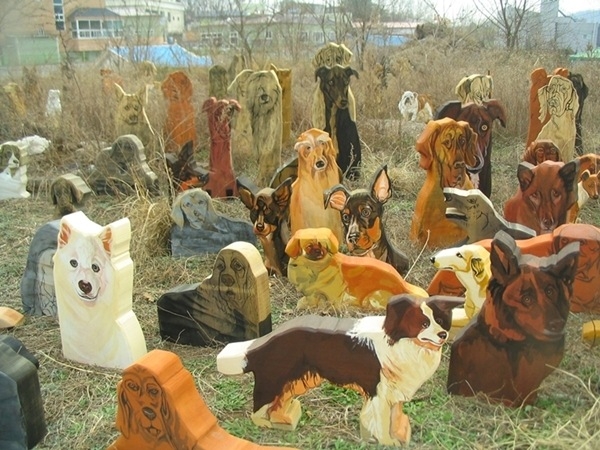
The eyes of the dog in the painting look full of sadness and pain. Some dogs have holes in their chests. It clearly shows the pain that dogs have experienced. The work contains criticism of human selfishness and coldness.
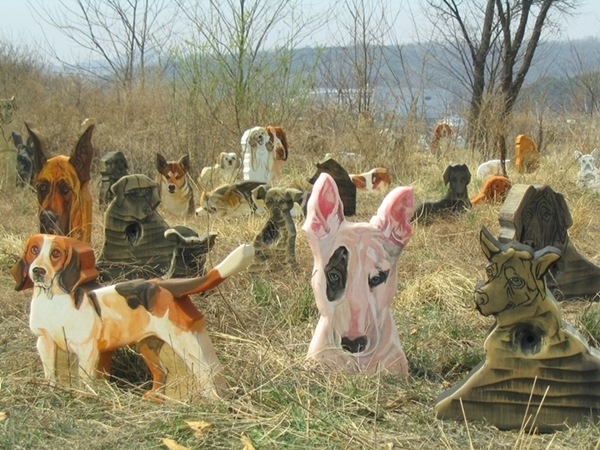
Yoon deals with motherhood that extends beyond love for her family to nature and ecosystem.
He once said, “Caring for other creatures without wishing for any reward is an act that women have carried in history, and it symbolizes women’s inherent power.” He also said, “I hate people who only know my children,” and pointed out, “It’s not motherhood, it’s selfishness.”
As he loves his children, he sees it as a true motherhood to include his surroundings and to expand his love to society.

Yoon also broadens his world. He painted a portrait of a female independence activist beyond eighty.
Yoon studied portraits during the Joseon Dynasty. I’ve noticed that few portraits have been painted by women for hundreds of years.
I decided to risk my life to paint a female independence activist against Japanese imperialism, thinking, “Women have not been treated so well.”

His work is the process of summoning, recording, and remembering forgotten female independence activists.
Currently, there are 76 female independence activists unveiled by Yoon as portraits.

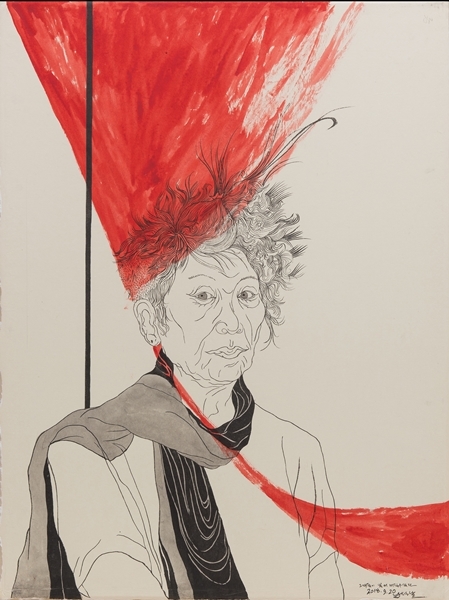
Yoon painted numerous self-portraits. Inspired by the self-portrait of Joseon Dynasty painter Yoon Doo-seo, Yoon learned Korean painting in the 2000s. Later, he painted self-portraits using folk painting techniques.
It is a self-portrait drawn by the artist on Korean paper. He has the appearance of an old man with wrinkles.
Short, curly permed hair is stretched out at will. His tight lips look stubborn. He’s staring straight ahead with his eyes wide open.
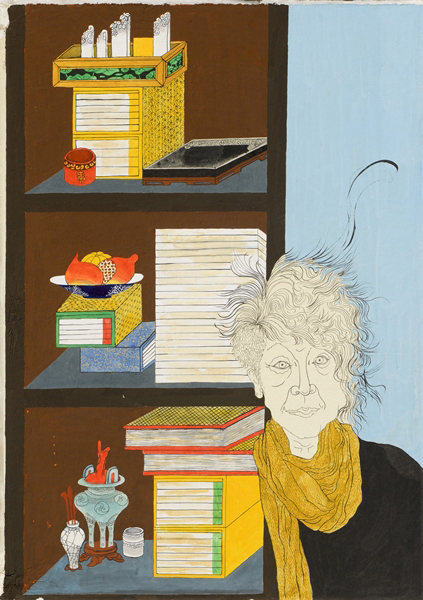
Through self-portraits, Yoon expressed himself like a grandmother who was more uptight than he really was. With this stubborn aspect, I think he will continue his work for more than 40 years.
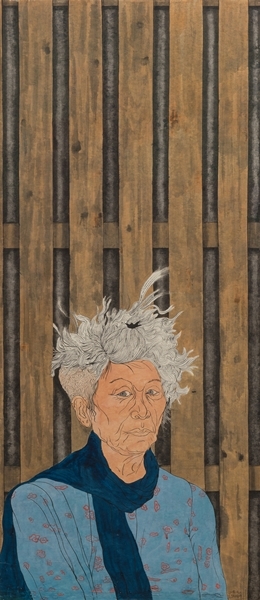
His drawings, such as a drawing diary, were displayed at the 2015 exhibition Yoon Seok-nam-Heart at the Seoul Museum of Art. Yoon painted with colored pencils and included text together.
This work is also a drawing on display at the time.
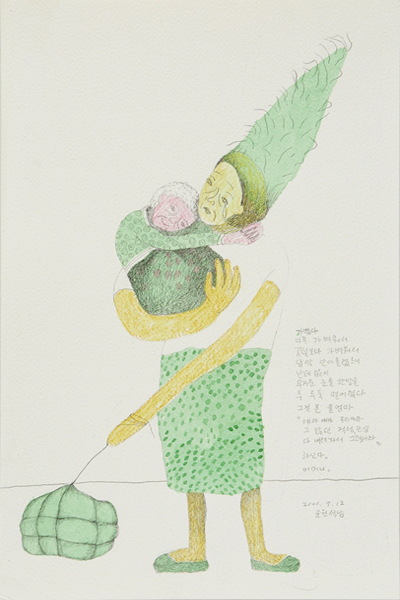
It’s too light. / It was so light / lighter than a feather / I hugged it up and it came out of nowhere / A heavy tear / A tumble fell. / My mom who saw it / “Dude, Emmy. Don’t be so worried. / All those worries, worries, / It’s because I put them all down.” / He does. / “Mother”.
The old mother in the painting is held by her daughter like a baby. Such a daughter weeps while holding her mother.
I remember that the middle-aged audience at the time watched the drawing carefully and couldn’t leave in front of it for a long time. Isn’t it because he thought of his mother?
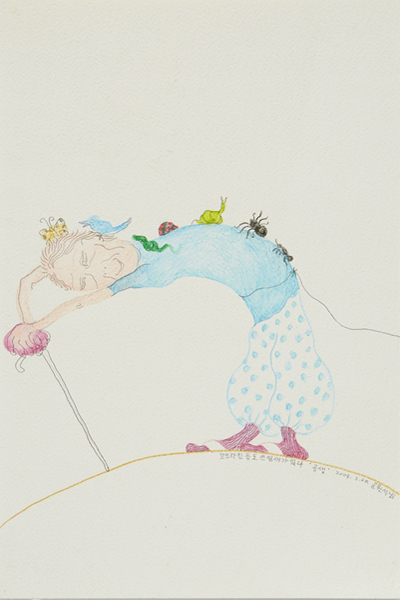
It’s written in small letters underneath this painting. There is also a use on the crooked back. Symbiosis”.
Butterflies, birds, ladybugs, snails, and ants are on the back of a crooked grandmother walking with a cane. It’s peaceful and beautiful.
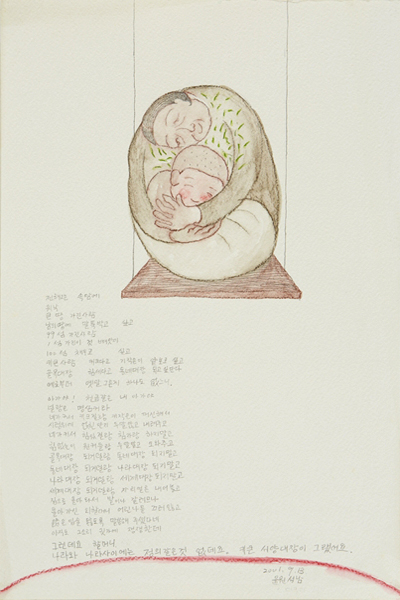
The grandmother is hugging her chestnut-haired grandson. And this is what I ask my beloved grandchild.
Baby! My precious baby. Keep in mind that you’re tall for the tall girl and the short one. Just drop me off on the top of the hole. Don’t brag about your strength. Don’t brag about your strength. / Help these weak wonkers.
“Don’t be the leader of the alley, don’t be the leader of the neighborhood, don’t be the leader of the country, don’t be the leader of the world, don’t be the leader of the country, don’t be the leader of the world, let’s make room with the leader of the world, / Come home and grind the fields.”
Yoon’s drawings imply the world of his works throughout his life. It reveals the love and respect for the mother, the motherhood that extends to nature and ecosystem, and the desire for peaceful coexistence.
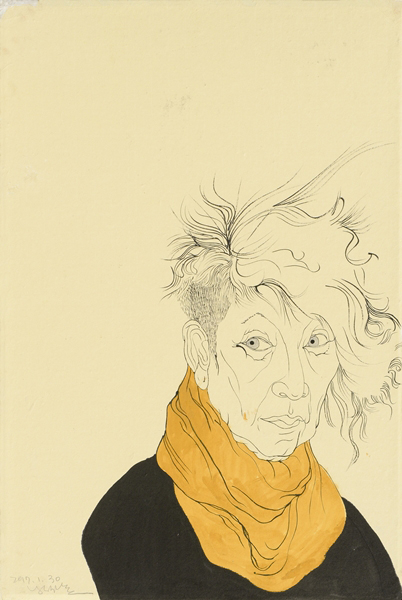
Throughout his life, Yoon constantly thought and transferred it to art. Feminist art, which started with criticism of patriarchal ideology, expanded to embrace life.
Yoon once said in an interview, “I want to be called a feminist for the rest of my life.” How will he talk about the power of women in the future? I want to see Yoon’s work for a long time in the future.
-Yoon Seok-nam and Kim Yi-kyung (2021) Women in Fight Become History, Hankyoreh Publishing
-Yoon Seok-nam and Han Kyung-ok (2016), sweet and friendly Mr. Dajeong, 4 seasons
-Yoon Seok-nam (2013), Yoon Seok-nam = Yun, Suknam, Hexagon
-Kim Hyun-joo et al. (2008), Pink Room Blue Face: A Study on Yoon Seok-nam’s Art World and Real Culture




